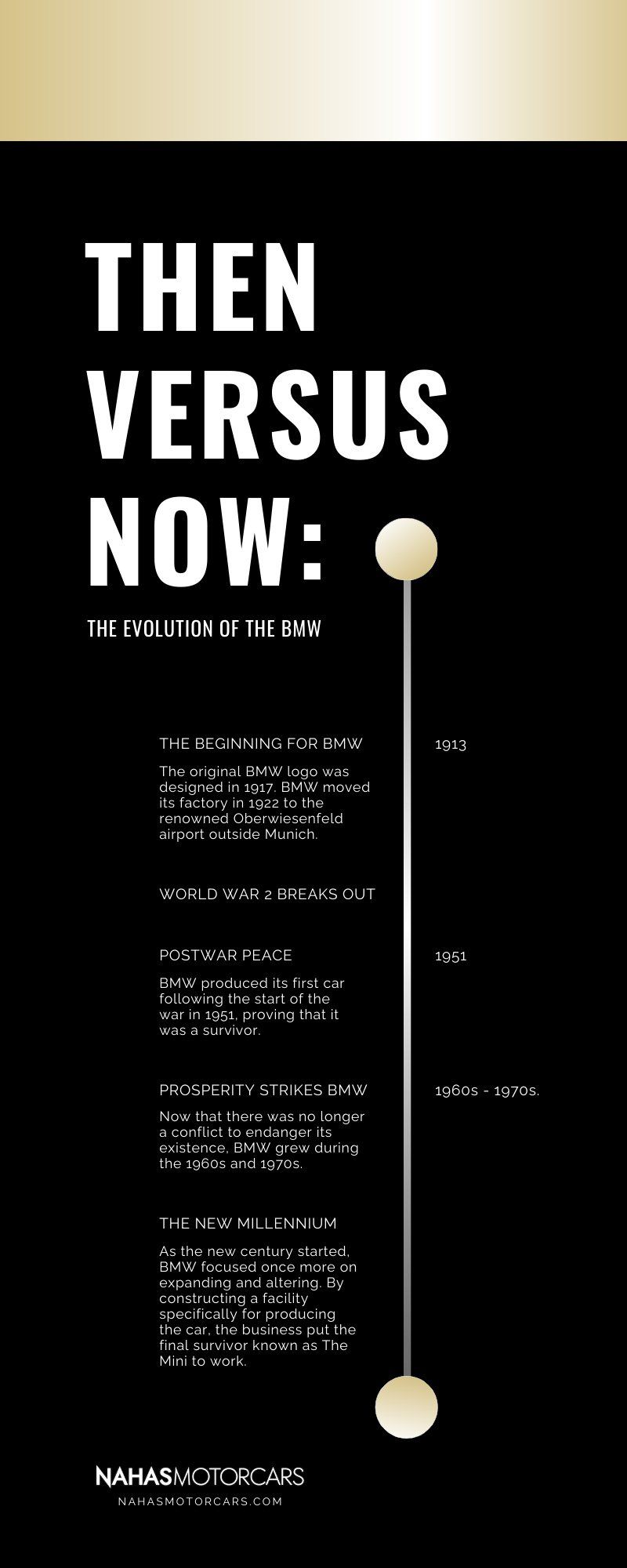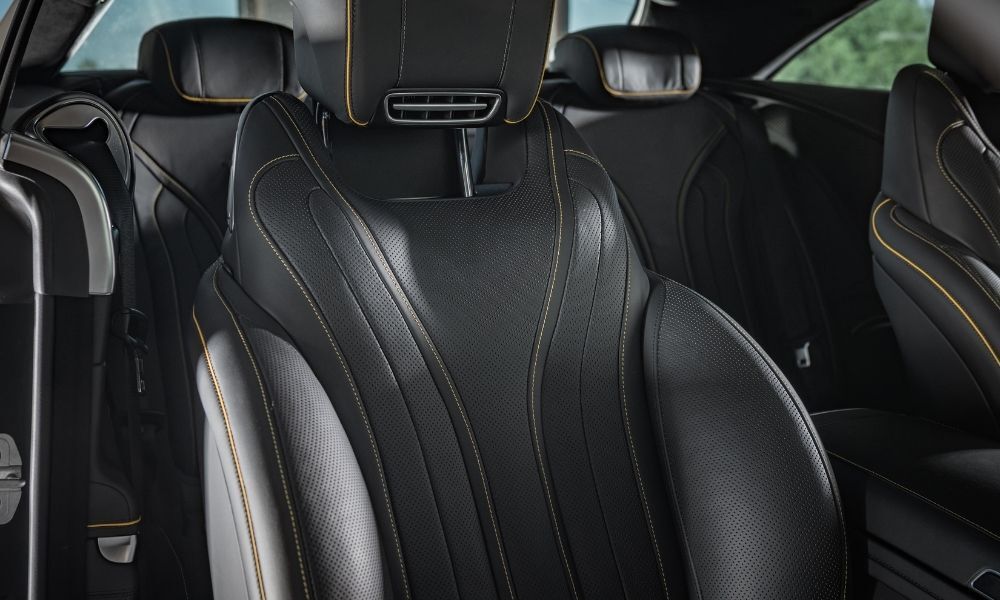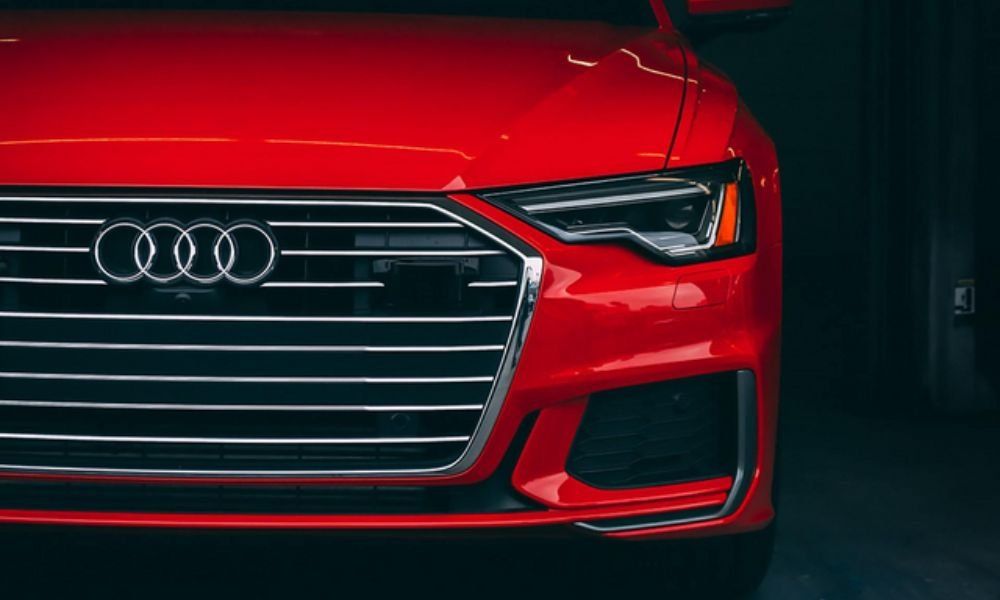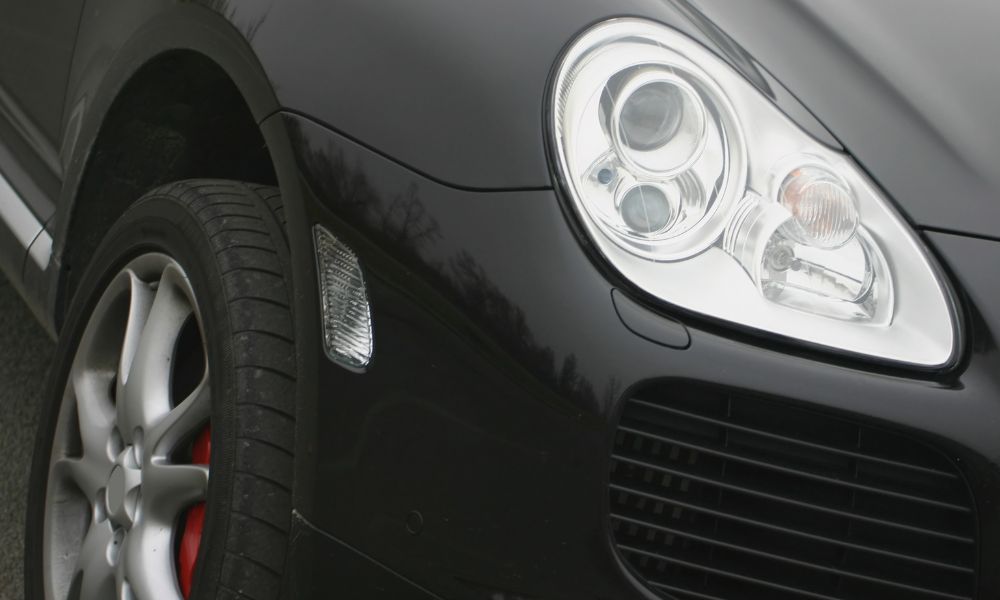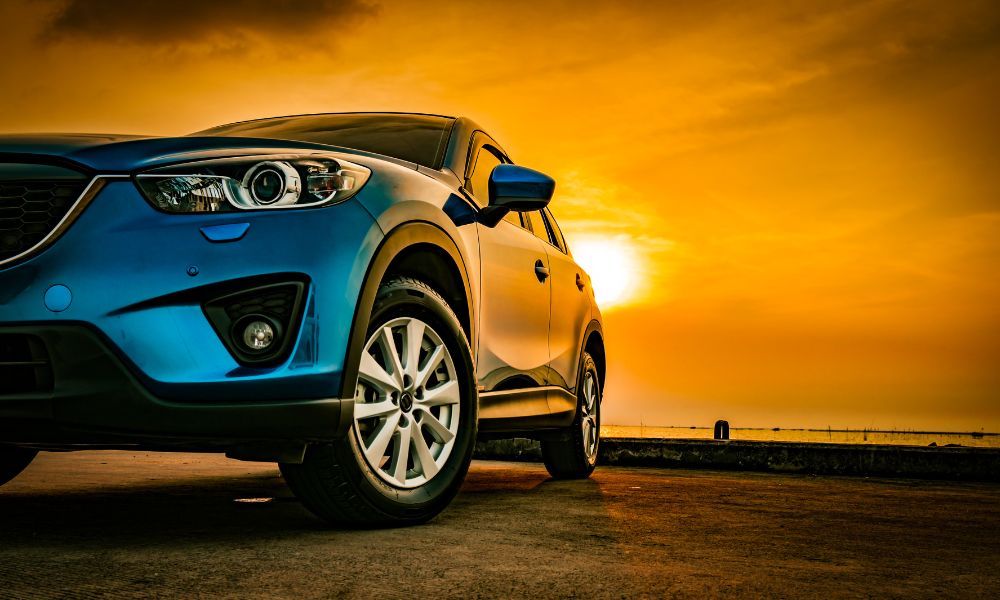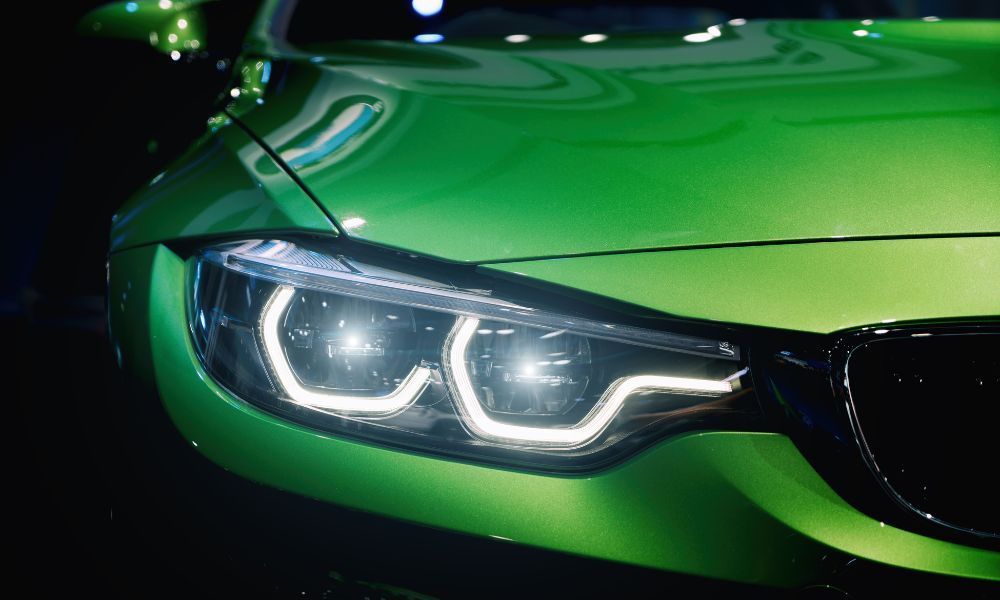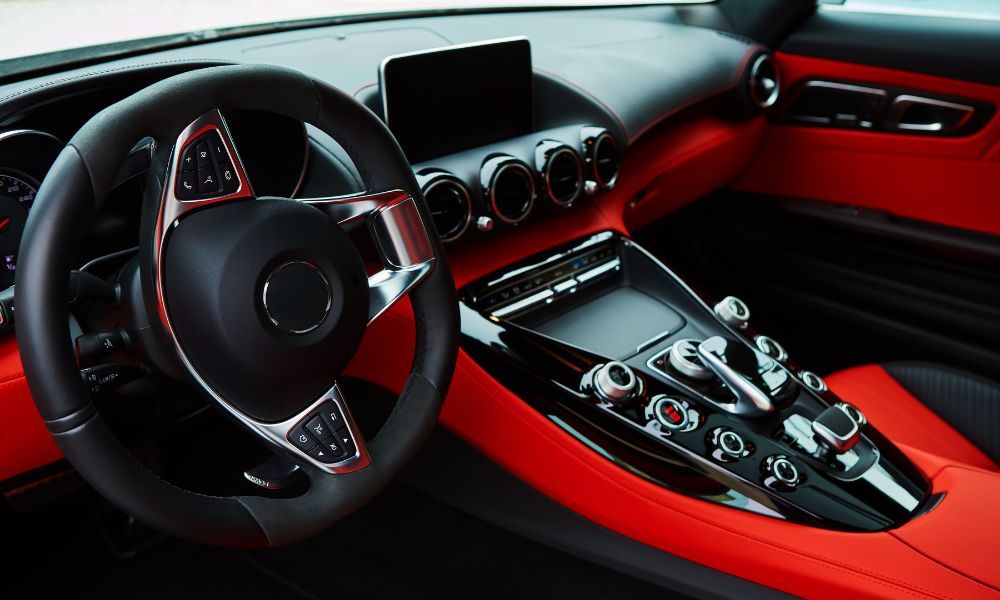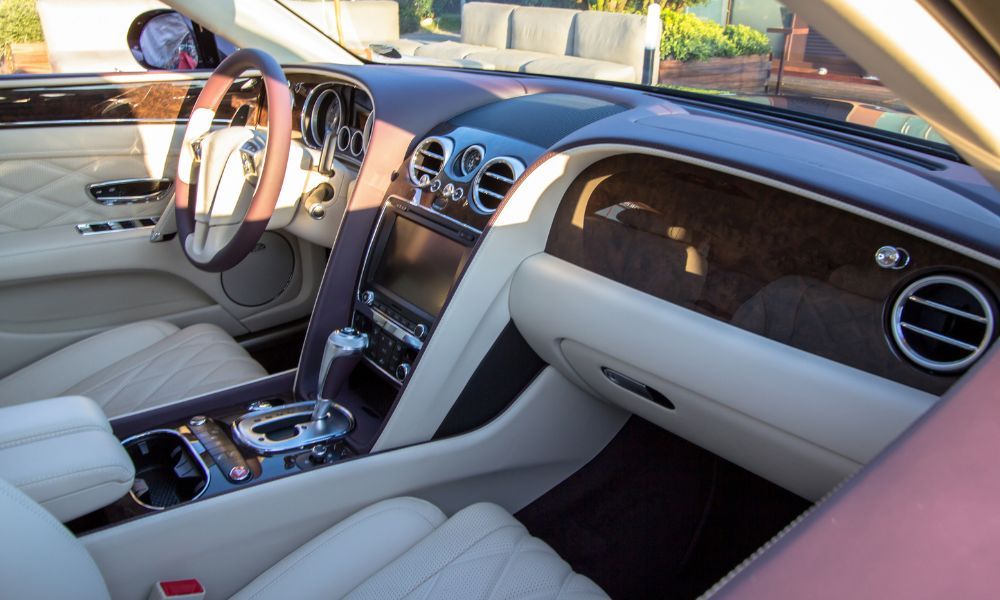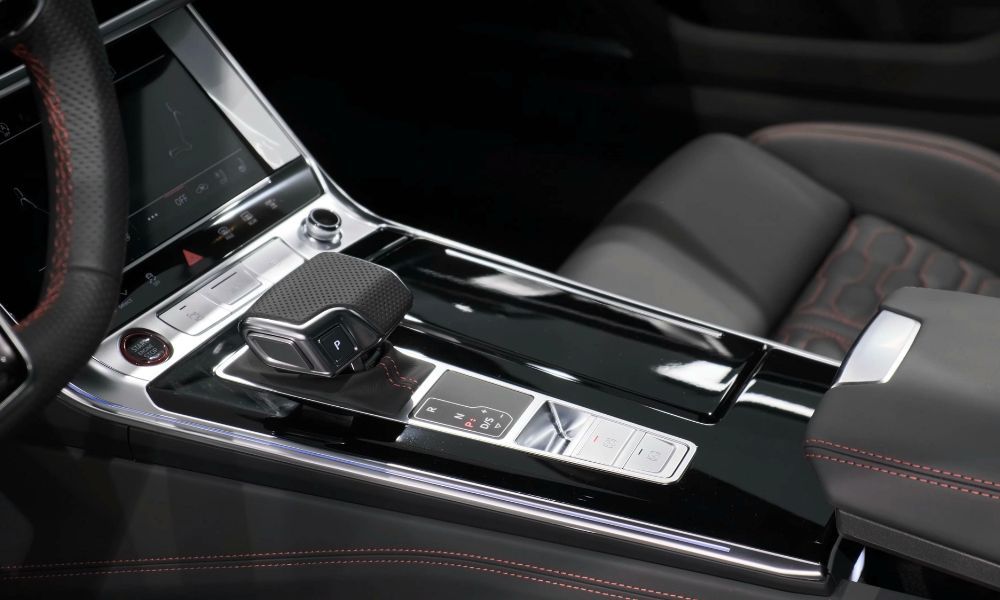Then Versus Now: The Evolution of the BMW
BMW was formerly a struggling maker of aviation engines before evolving into the most universally recognized luxury vehicle brand in the world. BMW has endured battles throughout its history while other manufacturers have been brought to their knees. The premium car maker set out to demonstrate that it was the pinnacle of German engineering excellence. With perseverance, BMW expanded from a lone, modest production plant close to Munich to a vast worldwide enterprise, with over 30 locations spread out all over the world. BMW has established itself as a key supporter in the world of competitive golf and has taken on significant social concerns, demonstrating that they are more than simply a car company. Read on to learn about the evolution of the BMW.
The Beginning for BMW
In October 1913, Karl Friedrich Rapp established Rapp-Motorenwerke. It was just a question of time until World War One broke out with the level of unrest in Europe at an all-time high. Rapp sold airplane engines as a consequence to fulfill the enormous demand at the time. Rapp's aircraft engines had an intrinsic fault that forced the engine to endure undesired vibrations, despite the high demand for his services, and his business started to struggle. During this period, Gustav Otto, the proprietor of an aircraft engine factory, was able to prosper.
The original BMW logo was designed in 1917. It featured white and blue, the colors of the Bavarian flag. The logo experienced a number of alterations throughout the years, but it remained faithful to its beginnings by retaining the old blue and white hues.
BMW moved its factory in 1922 to the renowned Oberwiesenfeld airport outside Munich. The headquarters for the whole BMW group would eventually be located in this industrial plant. Even now, the Munich headquarters still employs over 9,000 people and produces over 200,000 automobiles annually.
World War 2 Breaks Out
BMW started producing war materials for the Germanic war machine as World War II consumed Europe. It was rather typical at the time for companies like BMW to move to making war supplies. Following the Nazi invasion of Poland, the majority of production facilities in Germany were now directly under the authority of the government. BMW devoted all its effort and resources during this time to building airplanes and motorbikes for the German military.
All sides engaged displayed a darker side during World War II—and BMW was no different. Massive quantities of materials had to be produced and transported to the front lines in order to support the war effort. BMW started hiring foreign employees in 1940 in order to meet the military's continual manufacturing demands.
BMW started utilizing both Western European forced workers and POWs from bloody conflicts waged throughout Eastern Europe in 1942. These individuals worked alongside detainees from several concentration camps run by the Nazis. There was no other word to describe the situation in the facility. Everything else was viewed as being subordinate in favor of efficiency. Humane working conditions were among them.
Because BMW's factories contributed to the production of war supplies, the Allied troops destroyed all of them once the Nazi dictatorship was overthrown. When BMW was virtually bankrupt and had no other choices left, the company started making kitchenware to stay afloat. Worse still, as part of Germany's post-war reparations, the Munich facility was dismantled of all its heavy equipment and sent it abroad.
Postwar Peace
BMW produced its first car following the start of the war in 1951, proving that it was a survivor. The 501 model was notable for its spacious interior, which had enough for six people to sit comfortably. Although it finally failed, the 501 was first promoted as a high-end automobile. Even though it was a failure, the 501 gave BMW a second chance and helped it regain its position as a leading automaker. BMW was renowned for its advanced technological integration into its vehicle lines in addition to its excellent production standards. The 501 was produced until BMW decided to stop making it in 1958.
Daimler-Benz made an acquisition bid for BMW in 1959. At year's end, the BMW shareholders made the decision to reject the offer. BMW was able to reorganize with a new supervisor because to the financial aid from the recovering German government. The firm had worked for 15 years to reach the point they were at, and they weren't giving up easily.
Prosperity Strikes BMW
Up until this moment, the BMW brand has endured two world wars and emerged stronger than ever. Now that there was no longer a conflict to endanger its existence, BMW grew during the 1960s and 1970s. The main goal for BMW was expansion, and the company achieved its objective in a number of ways.
When BMW Kredit was established in 1971, the company's phase of expansion officially began. BMW at the time required a company to fund their expansion, which included assisting the increasing number of BMW shops worldwide. In the end, BMW Kredit contributed to the growth and development of the vehicle leasing industry, which was only starting off at the time.
The business established its newest BMW Motorsport division in 1972. BMW Motorsport was renowned for its high standards and started to receive acclaim for the strength and caliber of its cars. BMW modified its business strategy in response to its growing popularity and started producing sports vehicles for the average person. After the phenomenal success of the BMW Motorsport division, additional lines started to release premium performance-based cars on the market.
The New Millennium
BMW has demonstrated that it is a vibrant, dynamic organization with the desire to exist by surviving two world wars. As the new century started, BMW focused once more on expanding and altering. By constructing a facility specifically for producing the car, the business put the final survivor known as The Mini to work. The Mini gained enormous global popularity over time. In order to keep up with demand, manufacturing had to rise by 150 percent.
We hope you have enjoyed our recap of the evolution of BMW. If you are looking to sell your BMW online so that you may upgrade to the newest BMW, be sure to reach out to Nahas Motorcars today! We are dedicated to making the selling process as quick and easy for you as possible, while giving you a fair price.
